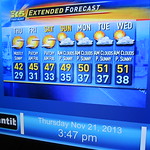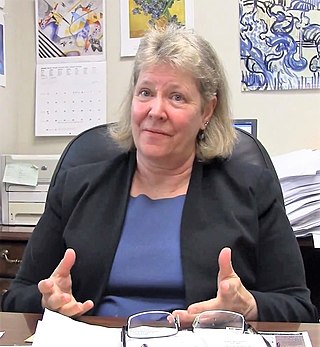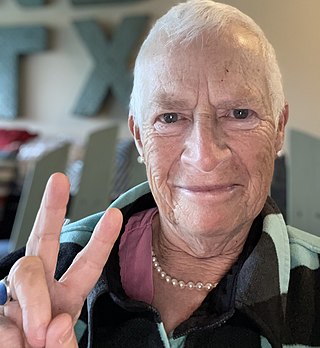Multimedia is a form of communication that uses a combination of different content forms, such as writing, audio, images, animations, or video, into a single interactive presentation, in contrast to traditional mass media, such as printed material or audio recordings, which feature little to no interaction between users. Popular examples of multimedia include video podcasts, audio slideshows, and animated videos. Multimedia also contains the principles and application of effective interactive communication, such as the building blocks of software, hardware, and other technologies.

Writing centers provide students with assistance on their papers, projects, reports, multi-modal documents, web pages, and other writerly needs across disciplines. Although writing center staff are often referred to as Tutors, writing centers are primarily places for collaboration in which writers and tutors work together to help writers achieve their goals. Typical services include help with the purpose, structure, function of writing, and are geared toward writers of various levels and fields of study. The goal is to help a writer learn to address the various exigences that they may encounter with the realization that no writing is decontextualized—it always addresses a specific audience. Writing centers may offer one-on-one scheduled tutoring appointments, group tutoring, and writing workshops. Services may also include drop-in hours. Writing tutors do not assign grades to students' writing assignments.
Computers and writing is a sub-field of college English studies about how computers and digital technologies affect literacy and the writing process. The range of inquiry in this field is broad including discussions on ethics when using computers in writing programs, how discourse can be produced through technologies, software development, and computer-aided literacy instruction. Some topics include hypertext theory, visual rhetoric, multimedia authoring, distance learning, digital rhetoric, usability studies, the patterns of online communities, how various media change reading and writing practices, textual conventions, and genres. Other topics examine social or critical issues in computer technology and literacy, such as the issues of the "digital divide", equitable access to computer-writing resources, and critical technological literacies. Many studies by scientists have shown that writing on computer is better than writing in a book
The Conference on College Composition and Communication is a national professional association of college and university writing instructors in the United States. The CCCC formed in 1949 as an organization within the National Council of Teachers of English (NCTE). CCCC is the largest organization dedicated to writing research, theory, and teaching worldwide.

Digital rhetoric can be generally defined as communication that exists in the digital sphere. As such, digital rhetoric can be expressed in many different forms, including text, images, videos, and software. Due to the increasingly mediated nature of our contemporary society, there are no longer clear distinctions between digital and non-digital environments. This has expanded the scope of digital rhetoric to account for the increased fluidity with which humans interact with technology.

A writing process describes a sequence of physical and mental actions that people take as they produce any kind of text. These actions nearly universally involve tools for physical or digital inscription: e.g., chisels, pencils, brushes, chalk, dyes, keyboards, touchscreens, etc.; these tools all have particular affordances that shape writers' processes. Writing processes are highly individuated and task-specific; they often involve other kinds of activities that are not usually thought of as writing per se.

Composition studies is the professional field of writing, research, and instruction, focusing especially on writing at the college level in the United States.

Information and media literacy (IML) enables people to show and make informed judgments as users of information and media, as well as to become skillful creators and producers of information and media messages. IML is a combination of information literacy and media literacy. The transformative nature of IML includes creative works and creating new knowledge; to publish and collaborate responsibly requires ethical, cultural and social understanding.
Commonly called new media theory or media-centered theory of composition, stems from the rise of computers as word processing tools. Media theorists now also examine the rhetorical strengths and weakness of different media, and the implications these have for literacy, author, and reader.
Multiliteracy is an approach to literacy theory and pedagogy coined in the mid-1990s by the New London Group. The approach is characterized by two key aspects of literacy – linguistic diversity and multimodal forms of linguistic expressions and representation. It was coined in response to two major changes in the globalized environment. One such change was the growing linguistic and cultural diversity due to increased transnational migration. The second major change was the proliferation of new mediums of communication due to advancement in communication technologies e.g the internet, multimedia, and digital media. As a scholarly approach, multiliteracy focuses on the new "literacy" that is developing in response to the changes in the way people communicate globally due to technological shifts and the interplay between different cultures and languages.

The study and practice of visual rhetoric took a more prominent role in the field of composition studies towards the end of the twentieth century and onward. Proponents of its inclusion in composition typically point to the increasingly visual nature of society, and the increasing presence of visual texts. Literacy, they argue, can no longer be limited only to written text and must also include an understanding of the visual.

The Digital Writing and Research Lab (DWRL) is a research lab at The University of Texas at Austin, United States, dedicated to the identification and promotion of twenty-first-century literacies. These literacies range from navigating online newsfeeds and participating in social networking sites to composing multimedia texts that require producing, sampling, and/or remixing media content.
LSU Communication across the Curriculum is a program at Louisiana State University (LSU) that works to improve the communications skills of students. This includes writing, public speaking, visual and technological communication skills. The program is a successor to the Writing across the Curriculum and Writing in the Disciplines programs.

Multimodality is the application of multiple literacies within one medium. Multiple literacies or "modes" contribute to an audience's understanding of a composition. Everything from the placement of images to the organization of the content to the method of delivery creates meaning. This is the result of a shift from isolated text being relied on as the primary source of communication, to the image being utilized more frequently in the digital age. Multimodality describes communication practices in terms of the textual, aural, linguistic, spatial, and visual resources used to compose messages.
Rhetorical circulation is a concept referring to the ways that texts and discourses move through time and space. The concept seems to have been applied to texts sometime in the mid-1800s, and it is considered, by most scholars, to be either subordinate to or synonymous with the canon of rhetorical delivery, or pronuntiatio. It is something like newspaper circulation and magazine circulation in that it can involve print media, but it is not limited to these. In fact, any kind of media can circulate. Books can be loaned; Internet memes can be shared; speeches can be overheard; YouTube videos can be embedded in web pages.

Kathleen Blake Yancey is the Kellogg W. Hunt Professor of English at Florida State University in the rhetoric and composition program. Her research interests include composition studies, writing knowledge, creative non-fiction, and writing assessment.
Jonathan Alexander is an American rhetorician and memoirist. He is Chancellor's Professor of English, Informatics, Education, and Gender & Sexuality Studies at the University of California, Irvine. His scholarly and creative work is situated at the intersections of digital culture, sexuality, and composition studies. For his work in cultural journalism and memoir, Tom Lutz, founding editor of the Los Angeles Review of Books, has called him "one of our finest essayists."

Cynthia "Cindy" Selfe is an author, editor, scholar, and teacher in the field of Writing Studies, with a speciality in the subfield of computers and composition. She is Humanities Distinguished Professor Emerita in the English Department at the Ohio State University where she taught from 2006 until her retirement in 2016. Prior to that, she taught at Michigan Technological University. Selfe was the first woman and the first scholar from an English department to win the EDUCOM Medal for innovative computer use in higher education.

Cheryl Ball is an academic and scholar in rhetoric, composition, and publishing studies, and Director of the Digital Publishing Collaborative at Wayne State University. In the areas of scholarly and digital publishing, Ball is the executive director for the Council of Editors of Learned Journals and the Editor-in-Chief for the Library Publishing Curriculum. Ball also serves as co-editor of Kairos: A Journal of Rhetoric, Technology, and Pedagogy, an open access, online journal dedicated to multimodal academic publishing, which she has edited since 2006. Ball's awards include Best Article on Pedagogy or Curriculum in Technical or Science Communication from the Conference on College Composition and Communication (CCCC), the Computers and Composition Charles Moran Award for Distinguished Service to the Field, and the Technology Innovator Award presented by the CCCC Committee on Computers in Composition and Communication (7Cs). Her book, The New Work of Composing was the winner of the 2012 Computers and Composition Distinguished Book Award. Her contributions to academic research span the areas of digital publishing, new media scholarship, and multimodal writing pedagogy.

Multimodal pedagogy is an approach to the teaching of writing that implements different modes of communication. Multimodality refers to the use of visual, aural, linguistic, spatial, and gestural modes in differing pieces of media, each necessary to properly convey the information it presents.












